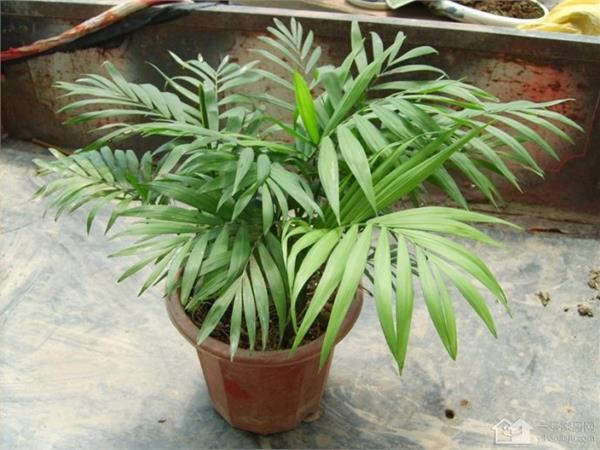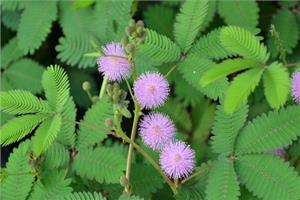The characteristics of Wang Lian the breeding method of Wang Lian
Pocket coconut, also known as dwarf coconut, pocket brown, pocket sunflower, dwarf brown. Pocket coconut of palm family, native to Mexico and Guatemala. Next let's take a look at how it is planted.

Pocket coconut is very suitable for indoor small and medium-sized potted plants, decorating living room, study, conference room, hotel service desk and other indoor environment, which can add tropical atmosphere and charm. Put it at the corner of the room or on the coffee table can add business atmosphere to the room and make the room show a charming tropical scenery. It is an evergreen shrub with a potted height of no more than 1 meter.
Pocket coconuts like warm, moist and semi-overcast environments. The suitable temperature for growth is 20-30 degrees, entering the dormancy period at 13 degrees, and the lowest overwintering temperature in winter is 3 degrees. The cultivation substrate of pocket coconut is well drained, moist and fertile loam. Generally, rotten leaf soil, peat soil, river sand and a small amount of base fertilizer can be used as the substrate for pot cultivation. It does not have high requirements for fertilizer. In general, liquid fertilizer is applied twice a month in the growing season, with little or no fertilization at the end of autumn and winter. Son
Pocket coconut pot plant, plant height is not more than 1 meter, its stem is slender and erect, unbranched, dark green, with irregular rings. Leaves from the top of the stem, pinnately compound, cleft, lobes broadly lanceolate, 20-40 pinnate leaflets, sickle-shaped, dark green, shiny. The plant is spring flowering, fleshy spikes axillary, dioecious, male flowers slightly erect, female inflorescences drooping slightly when nutritious conditions are good, flowers yellow are bead-shaped; small berries are mostly orange-red or yellow.
Culture method of pocket coconut
1. Soil: the cultivation substrate of pocket coconut is well drained, moist and fertile loam. Generally, rotten leaf soil, peat soil, river sand and a small amount of base fertilizer can be used as substrate for pot cultivation.
Pocket coconut
2. Watering: watering is based on the principle that it is better to be wet than dry, and the basin soil can always be kept moist.
3. Sunshine: pocket coconuts prefer semi-overcast conditions and avoid direct sunlight in high temperature season. In the hot sun, the leaf color will become light or yellow, and will produce scorched leaves and black spots, losing ornamental value.
4. Temperature: the suitable temperature for the growth of pocket coconut is 20-30 ℃, 13 ℃ enters dormancy state, and the overwintering temperature is 10 ℃.
5. Fertilization: the requirement of fertilizer is not high, liquid fertilizer is applied 1-2 times a month in general growing season, little or no fertilizer is applied in late autumn and winter.
6. Insect pests: pocket coconuts are prone to social brown spot disease under high temperature and high humidity, which can be controlled with 8-1000 times topiramate or chlorothalonil. Scale insects are also easy to occur when the air is dry and poorly ventilated. In addition to manual scraping, it can also be sprayed with 800-1000 times omethoate.
Matters needing attention in pocket coconut culture
At seedling stage, dilute liquid fertilizer should be applied 3-4 times in spring and spring.
Beware of the focal edge caused by too much light. Because pocket coconuts prefer a shady environment, indoor cultivation should be placed near the north window, east window or other places with bright scattered light; pocket coconuts are most afraid of direct light, even if exposed to the sun for a short time, it will also cause the leaves to scorch and turn yellow. On the contrary, if it is kept in a dark, dry place for a long time, the color of the leaves will become lighter and lose its luster.
Suitable temperature. Generally, the optimum temperature for growth is 20-30 ℃. In winter, the indoor temperature is between 12-14 ℃, and the lowest temperature can not be lower than 10 ℃. At the same time, it also maintains the humidity of the surrounding air. It is necessary to spray water on the leaf surface frequently to increase the air humidity.
The basin needs to be changed every 3 years. Acid soil should not be used in the basin soil, and a small amount of clay should be added.
The above is the relevant introduction of this article, I believe you have a simple understanding of this after reading it, if necessary, you can continue to pay attention to the No. 1 home network for more information.
Related
- Wuhan Hospital Iron Tree Blooming Result Was Instantly Frightened by the Gardener Master
- Which variety of camellia is the most fragrant and best? Which one do you like best?
- What is the small blue coat, the breeding methods and matters needing attention of the succulent plant
- Dormancy time and maintenance management of succulent plants during dormancy
- Minas succulent how to raise, Minas succulent plant pictures
- What are the varieties of winter succulent plants
- How to raise succulent plants in twelve rolls? let's take a look at some experience of breeding twelve rolls.
- Attention should be paid to water control for succulent plants during dormant period (winter and summer)
- Watering experience of twelve rolls of succulent plants
- Techniques for fertilizing succulent plants. An article will let you know how to fertilize succulent plants.



